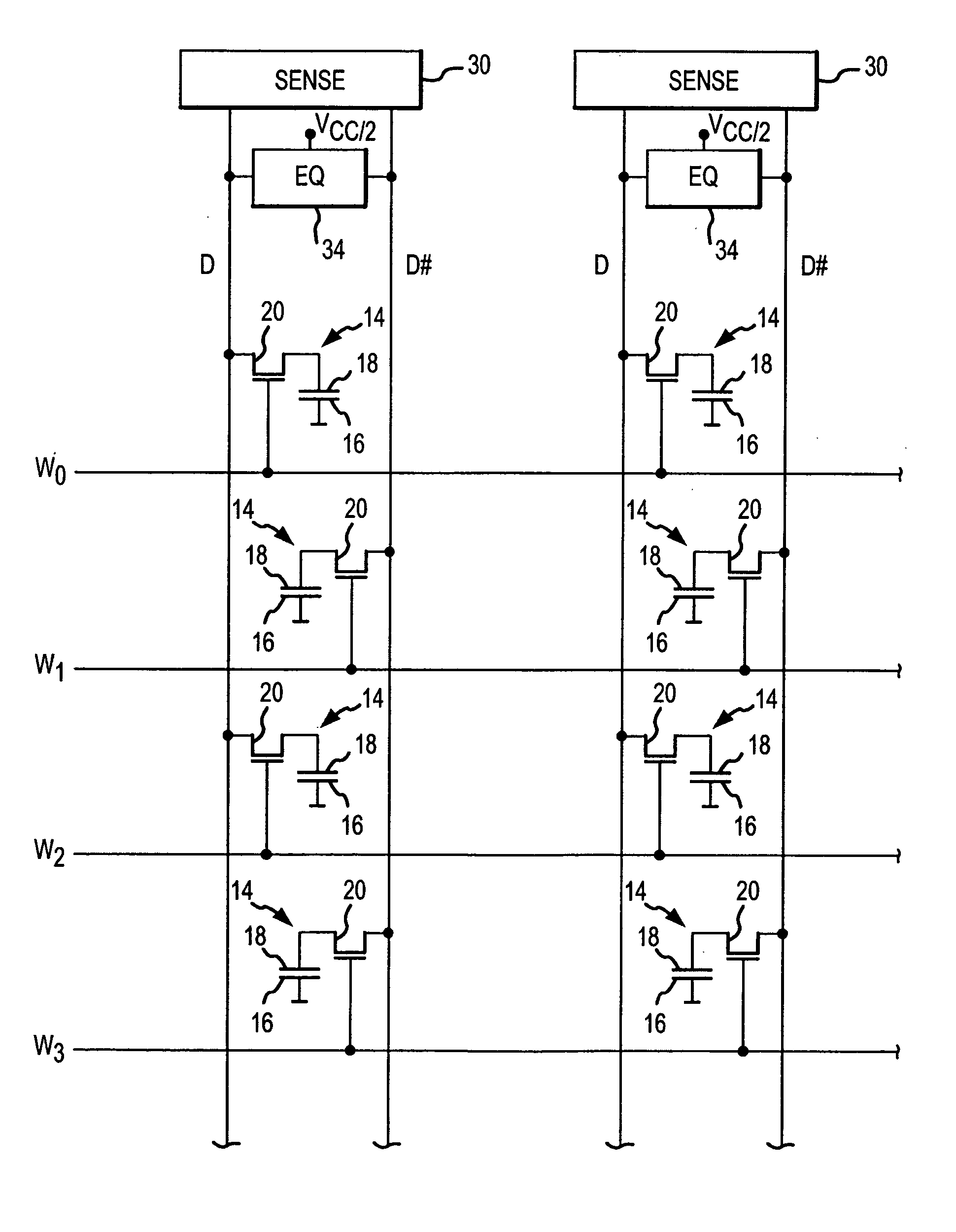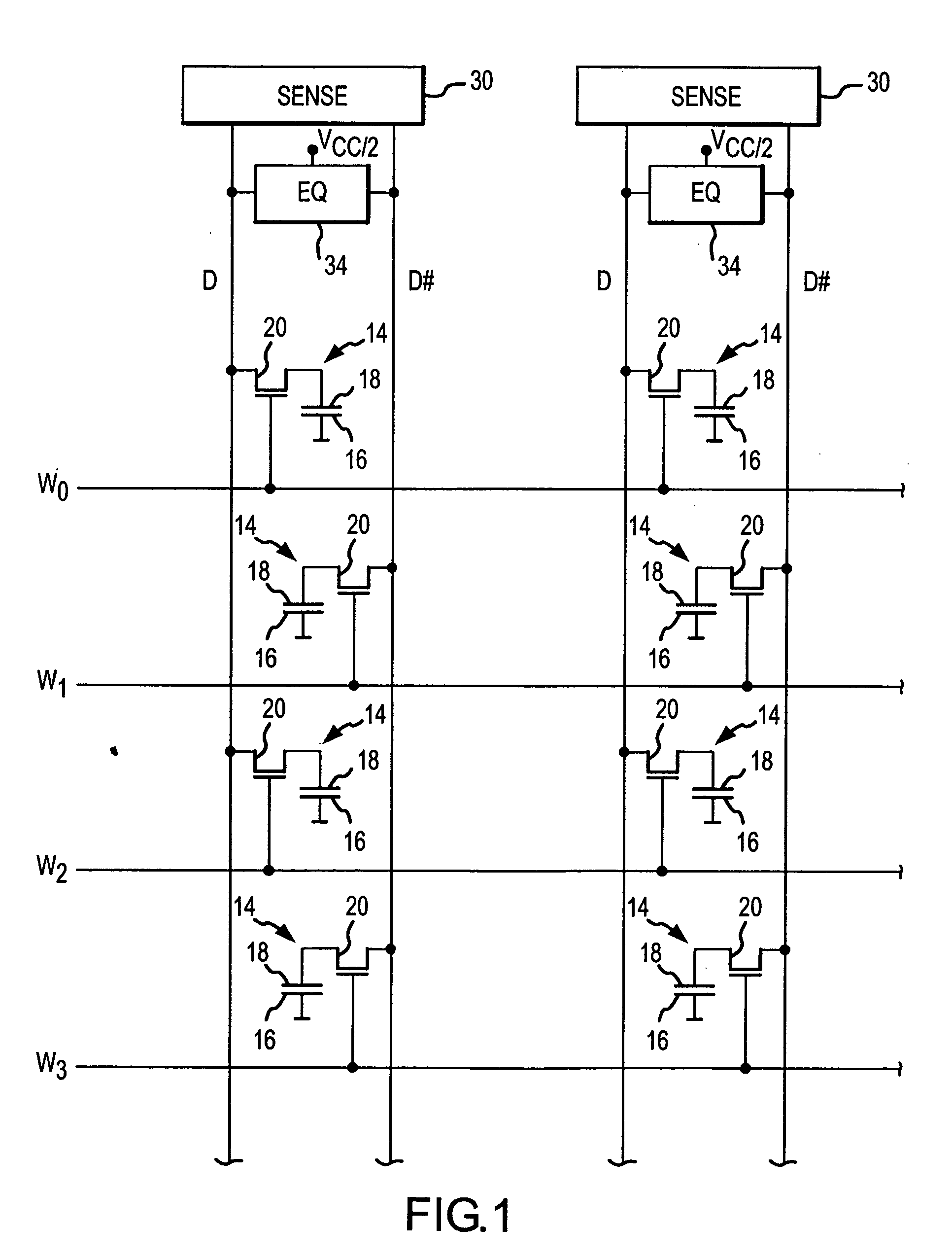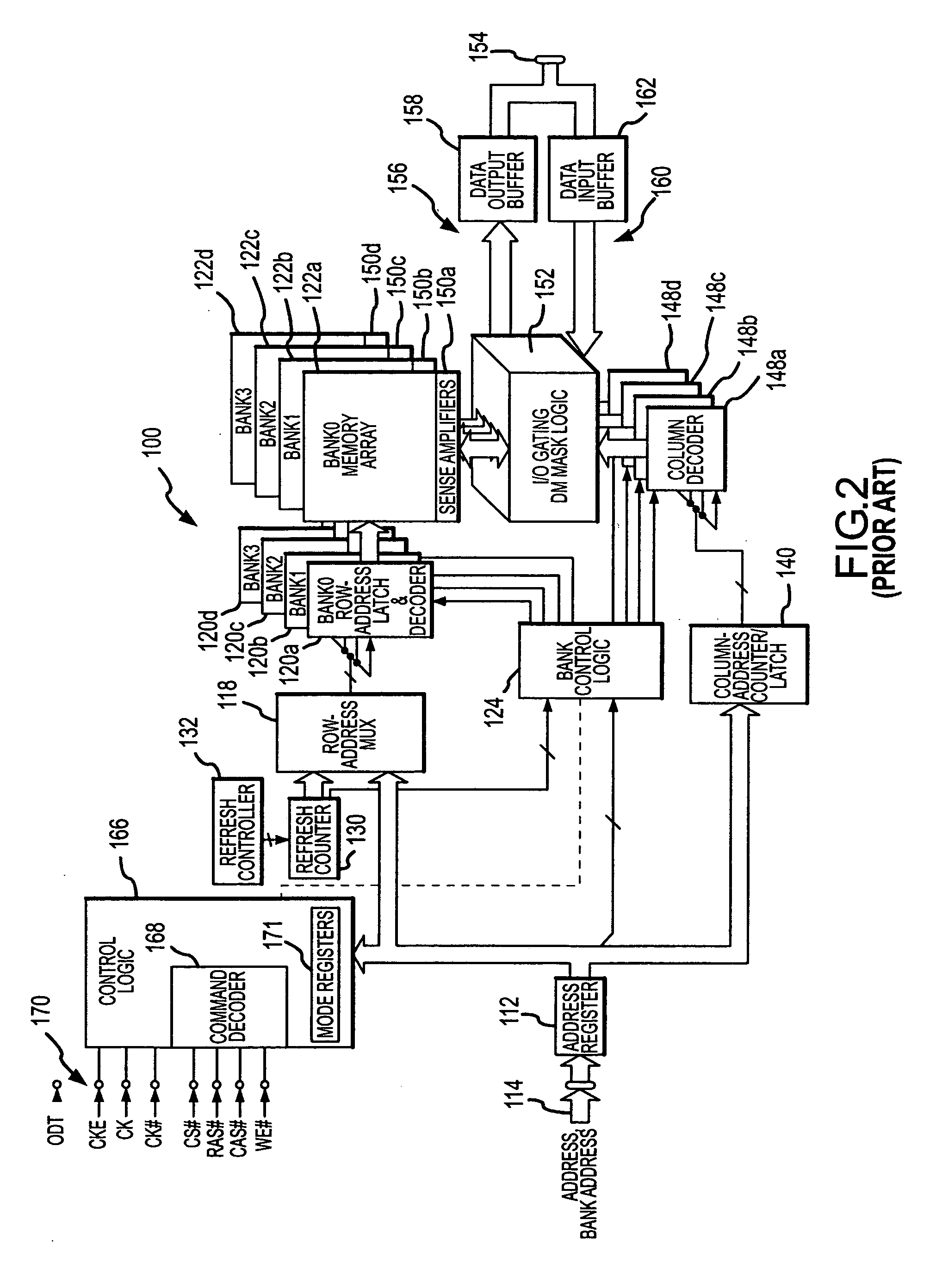Method and system for reducing the peak current in refreshing dynamic random access memory devices
- Summary
- Abstract
- Description
- Claims
- Application Information
AI Technical Summary
Benefits of technology
Problems solved by technology
Method used
Image
Examples
Embodiment Construction
[0025] A typical synchronous dynamic random access memory (“SDRAM”) device 100 that can use various embodiments of the present invention described below is shown in FIG. 2. The SDRAM 100 includes an address register 112 that receives either a row address or a column address on an address bus 114. The address bus 114 is generally coupled to a memory controller (not shown in FIG. 2). Typically, a row address is initially received by the address register 112 and applied to a row address multiplexer 118. The row address multiplexer 118 couples the row address to row address latches and decoder 120a-d, which are, in turn, coupled to respective banks 122a-d of DRAM memory cell arrays. The row address latches and decoders 120a-d stores the row address and decodes the stored address to apply row actuating signals to the memory cells in the respective banks. The row address multiplexer 118 also couples row addresses to the row address latches and decoders 120a-d for the purpose of refreshing...
PUM
 Login to View More
Login to View More Abstract
Description
Claims
Application Information
 Login to View More
Login to View More - R&D
- Intellectual Property
- Life Sciences
- Materials
- Tech Scout
- Unparalleled Data Quality
- Higher Quality Content
- 60% Fewer Hallucinations
Browse by: Latest US Patents, China's latest patents, Technical Efficacy Thesaurus, Application Domain, Technology Topic, Popular Technical Reports.
© 2025 PatSnap. All rights reserved.Legal|Privacy policy|Modern Slavery Act Transparency Statement|Sitemap|About US| Contact US: help@patsnap.com



